8 golden rules for decluttering a kitchen –make cooking more fun in a calm and uncluttered space
Experience the satisfaction of chaos-free cupboards, organised drawers and orderly larders with the experts’ top tips
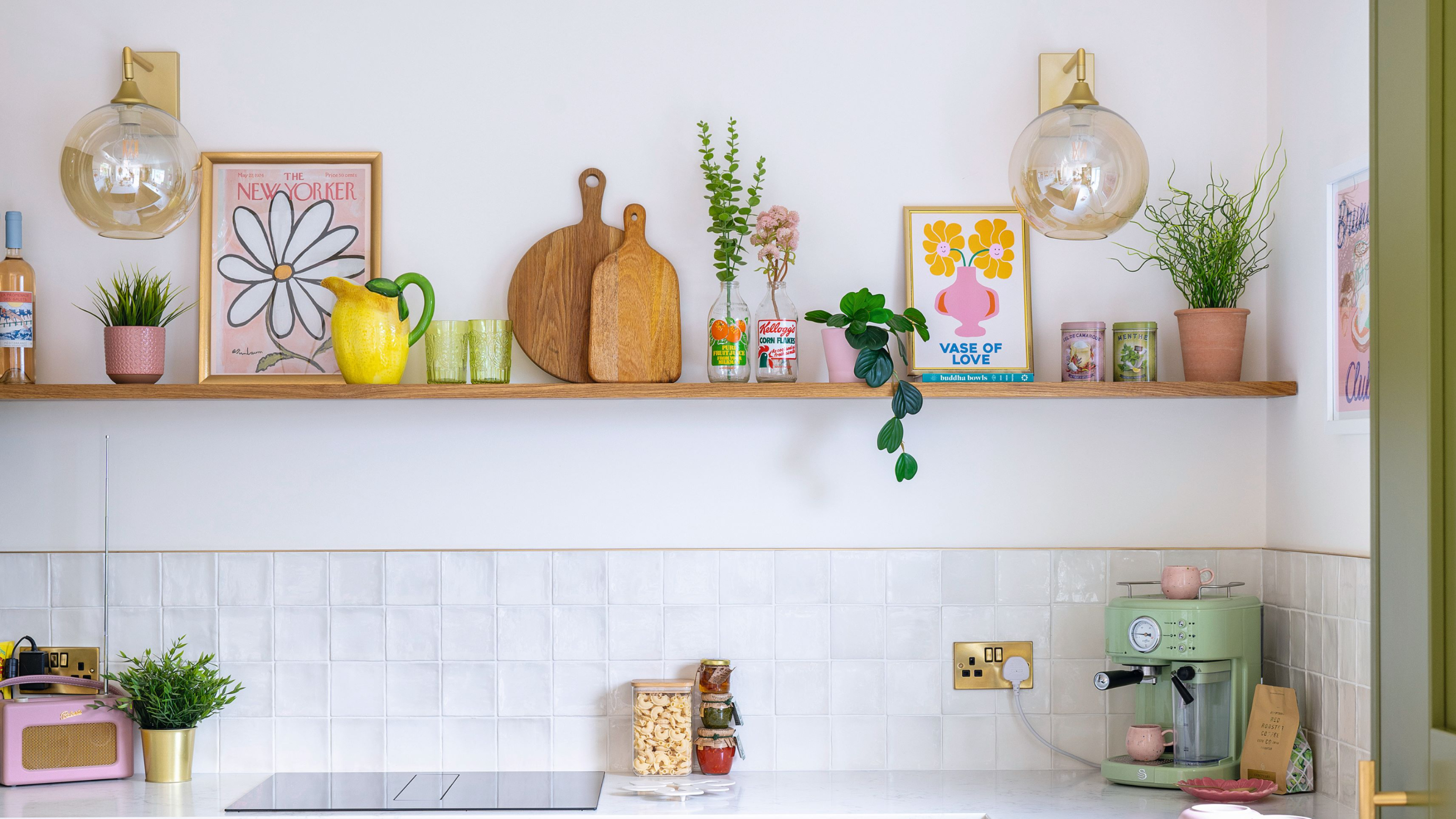

Kitchen cupboards bursting at the seams and hours wasted searching for spices? It's time to declutter your kitchen and whip those kitchen cabinets and countertops into shape. If you struggle to let go of items, don’t sweat it; there are several brilliant decluttering methods that experts swear by and all of them can be applied to the kitchen.
The least daunting decluttering technique has got to be the one-a-day challenge, which is a slow-burner but won’t take up too much time. You can even make the process fun (no, really) by employing the Scavenger Hunt decluttering method, which is perfect for competitive types.
However, before you start on your kitchen declutter, it’s important to make like a Boy Scout and be prepared. ‘Before you begin, gather supplies such as bin bags, recycling bins, cleaning supplies and containers, so you have everything on hand to make the process easier,’ advises Mark Godman, Director of Gentleman & A Van. ‘Once a thorough clutter cull is completed, set time aside each month to keep things in check.’

Mark Godman, Director of Gentleman & A Van is often asked by his clients to help them declutter their homes prior to a potential move. Whether you’re moving home, relocating your business, or simply need a large item moved from one location to another, Gentleman & A Van has a service that’s perfectly tailored to your needs.
8 rules for decluttering a kitchen
If you’re wondering how to organise kitchen cabinets or just seeking kitchen storage trends, you’re in the right place. Follow our golden rules for decluttering your kitchen and you’ll soon enjoy extra storage alongside a quicker and more efficient cooking experience.
1. Have a big clear out
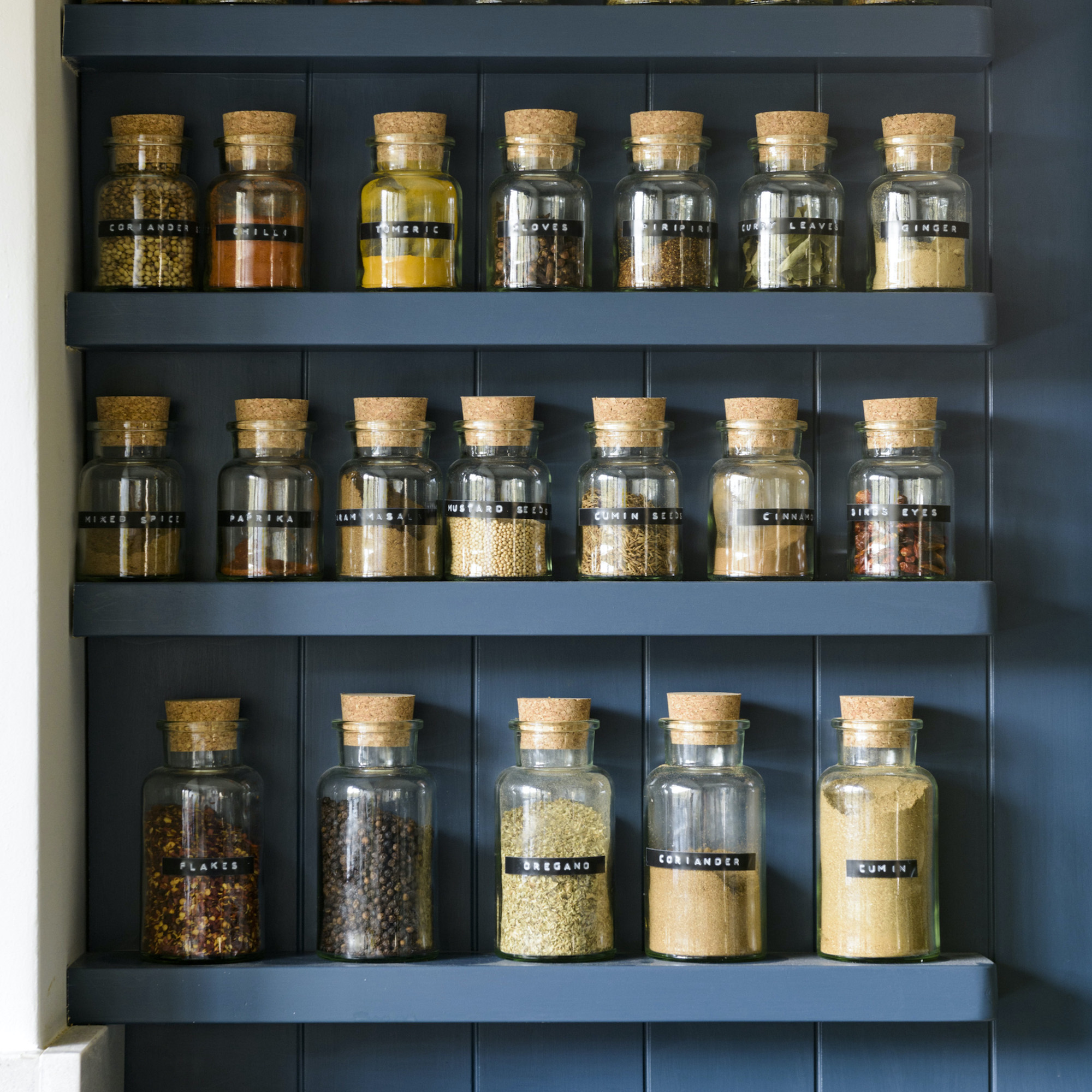
At the absolute core of a clutter-free kitchen is deep clear out of the unloved, unused, and unwanted. Whether you have one ‘Monica Cupboard’ or three ‘everything drawers’, it’s all too easy for daily detritus to build up inside kitchen cupboards.
Start with one mammoth effort and rope in other family members to help. ‘Begin by emptying all your cupboards, group items by category, and do an inventory of your food items, cookware, and dishes to weed out any doubles. Discard expired or unused items and donate any unwanted kitchenware. Be sure to remember to do the cupboard under your sink!’ says Penny Moyses, Home Expert and founder of the Clean & Tidy Home Show.
Once all the dead wood and misplaced items have been culled, you’ll be amazed by how much space you have, and how much easier it is to find what you need.
Sign up to our newsletter for style inspiration, real homes, project and garden advice and shopping know-how

As founder of the Clean & Tidy Home Show, which takes place at Excel London in October, Penny is a passionate advocate for the power of a well-organised and functional living space. She is dedicated to helping people create a living environment that supports their needs, wants, and dreams.
2. Declutter countertops
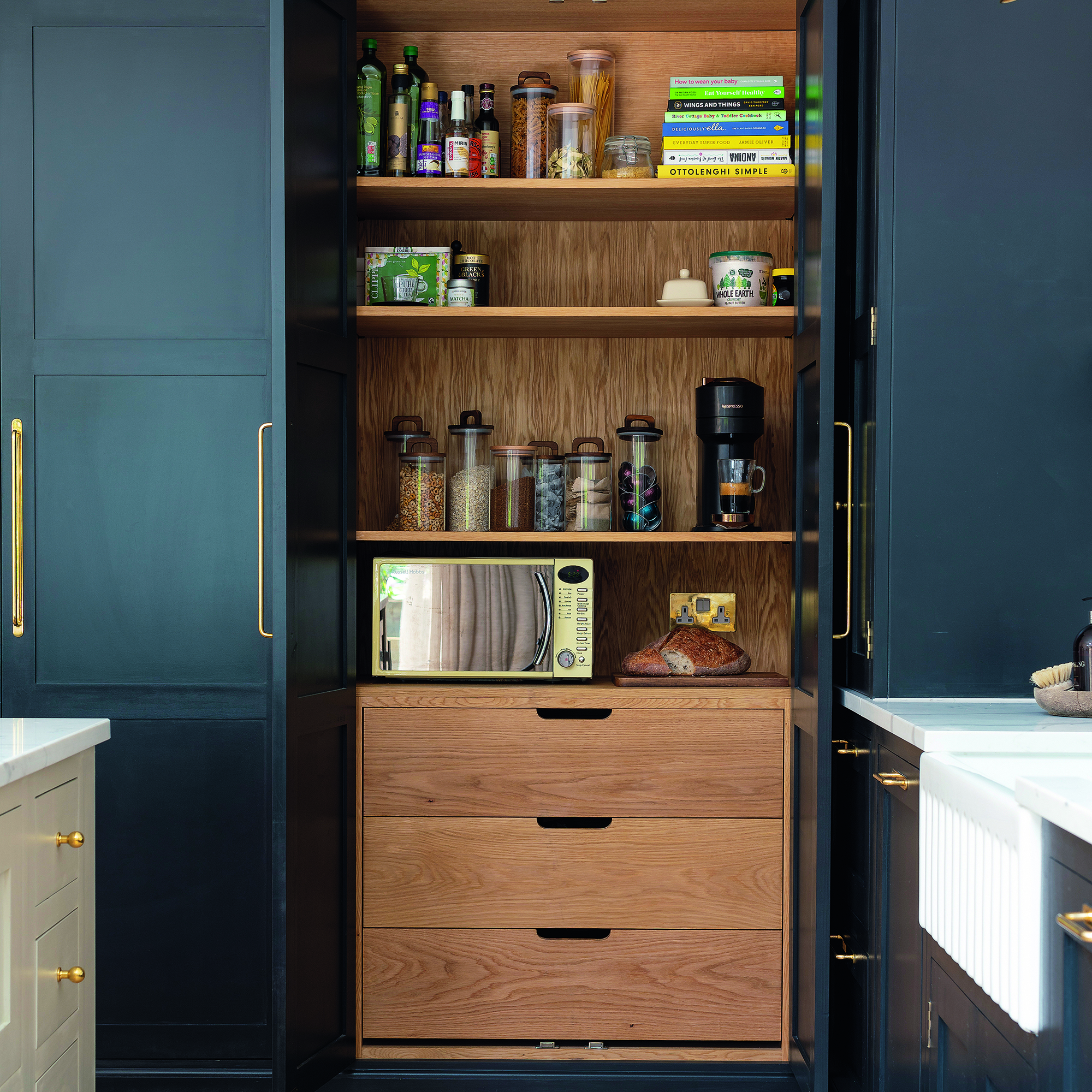
Take no prisoners. If you haven’t used the Nutribullet Juicer since last January’s health kick, it doesn’t deserve a prime spot on your countertops. Always try to find alternative storage for knives and mugs or hang them under wall cabinets so they’re not taking up precious prep
Another clutter hot-spot, kitchen surfaces can quickly pile up with everything from stray plastic food containers, random receipts, and errant homework. Start by removing anything that doesn’t belong in the kitchen, and making sure it ends up in its rightful home, not stuck on the bottom step of your staircase and stepped over for several weeks.
Then there’s the stuff that you do need but has no other home. We’re talking knife blocks, mug trees, fruit bowls and endless small appliances. ‘Take inventory of your small appliances, such as blenders, toasters, and coffee makers. Keep only the appliances you use regularly and consider donating or selling those that are gathering dust,’ advises Penny Moyses, from the Clean & Tidy Home Show.
3. Keep clutter at bay
If you don’t want to repeat steps one and two again every six months or so, commit to tackling just one problem drawer or cupboard a week or fortnight to keep on top of strays and make the chore more manageable.
One of the most popular ways to keep clutter at bay is the Five-Minute Method, which, as the name suggests, involves spending five minutes a day tidying up.
'Five-minute tidying sessions are an effective decluttering strategy that can be easily incorporated into your daily routine. Regular short tidying sessions can lead to consistent progress over time, preventing clutter from accumulating,’ explains Elaine Penhaul, of Lemon and Lime.
‘We recommend using a timer to stay focused and ensure you stick to the five-minute timeframe. Focus on a specific area or category during each session – for example, a drawer, a shelf, or a small corner. Reward yourselves for making progress. Ending with a coffee, cake, or even a glass of wine can incentivise the five-minute sessions and help get all the family involved.’

As founder of award-winning national home staging firm Lemon and Lime Interiors, Elaine helps sell properties faster by decluttering, redecorating and restyling. Clearing out clutter is a big focus of her work, and she has become something of an expert in streamlining homes to make them more desirable for both buyer and seller.
4. Think logically when filling cupboards
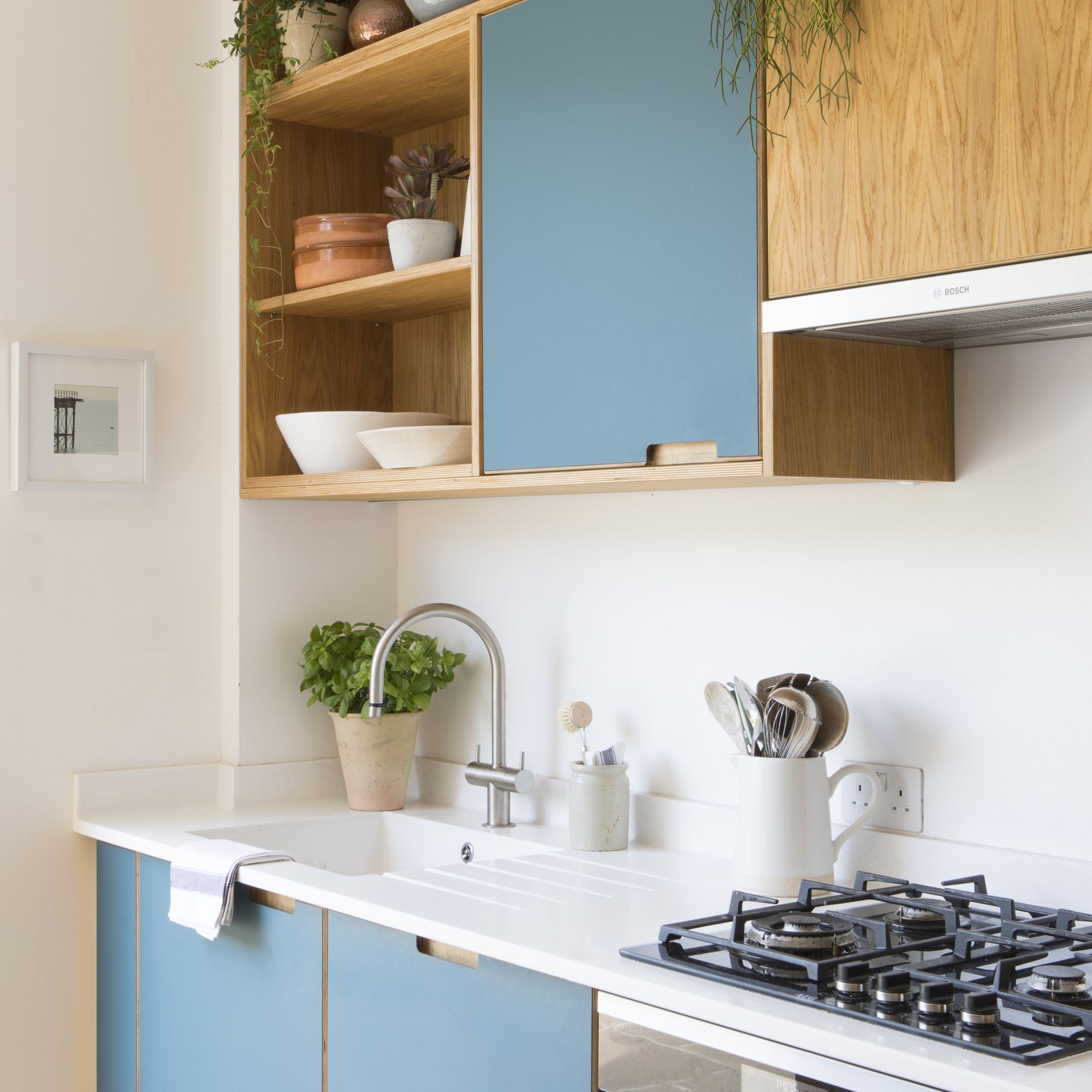
‘When deciding where to store things in your kitchen, think about the practicality and flow of the space. This will make the whole space work more effectively,’ says Gemma Lilly, co-founder of Style Sisters. The aim is to plot your cupboard contents in a way that requires the lowest step count for the most common tasks, like emptying the dishwasher or laying the table.
‘Some areas will feel more obvious from the get-go, like putting mugs, tea and coffee items in the cupboard nearest the kettle. Herbs and spices will be best placed in the cupboard closest to the oven or hob, for easy reach when cooking or baking; put plates close to where you plate up, and so on,’ Gemma adds. ‘Heavier items, pots and pans etc. are best kept near the oven but lower down so you aren't lifting them down from high shelves.’
Don’t be afraid to rearrange your cupboards and drawers if something is not working but do it sooner rather than later to avoid too much disruption.
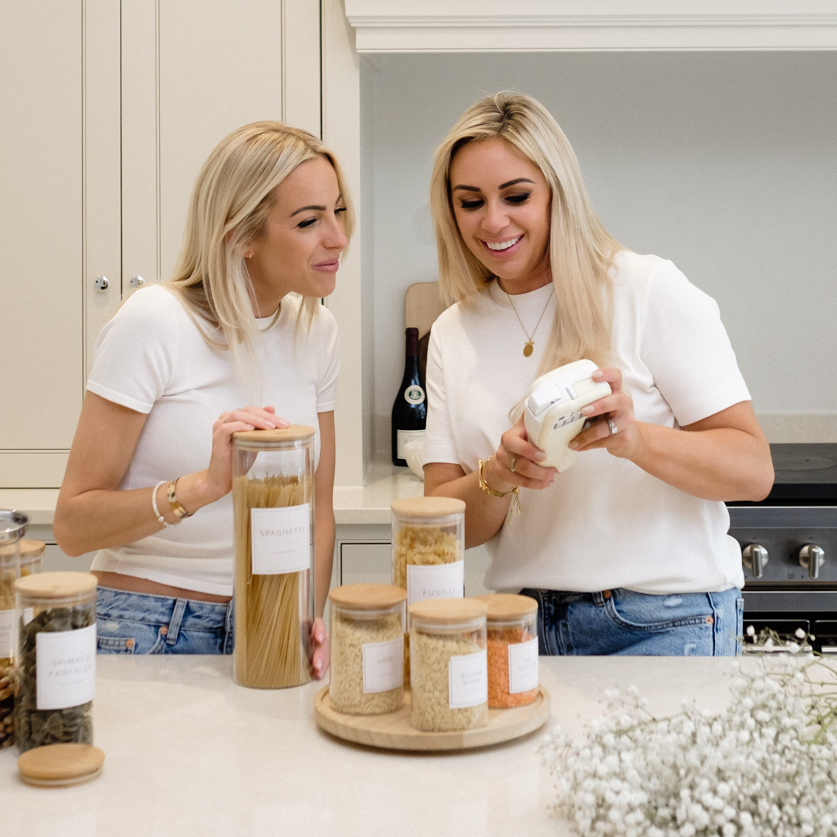
AKA Style Sisters, Charlotte is an interior designer and Gemma a fashion stylist who collaboratively came together to create a stylish detox and organising service for the home. From TV room makeovers, a debut book, to sharing organising hacks on social media; Style Sisters are on a mission to promote the positive benefits a tidy space can bring to your home, mind, and wellbeing.
5. Invest in internal storage solutions
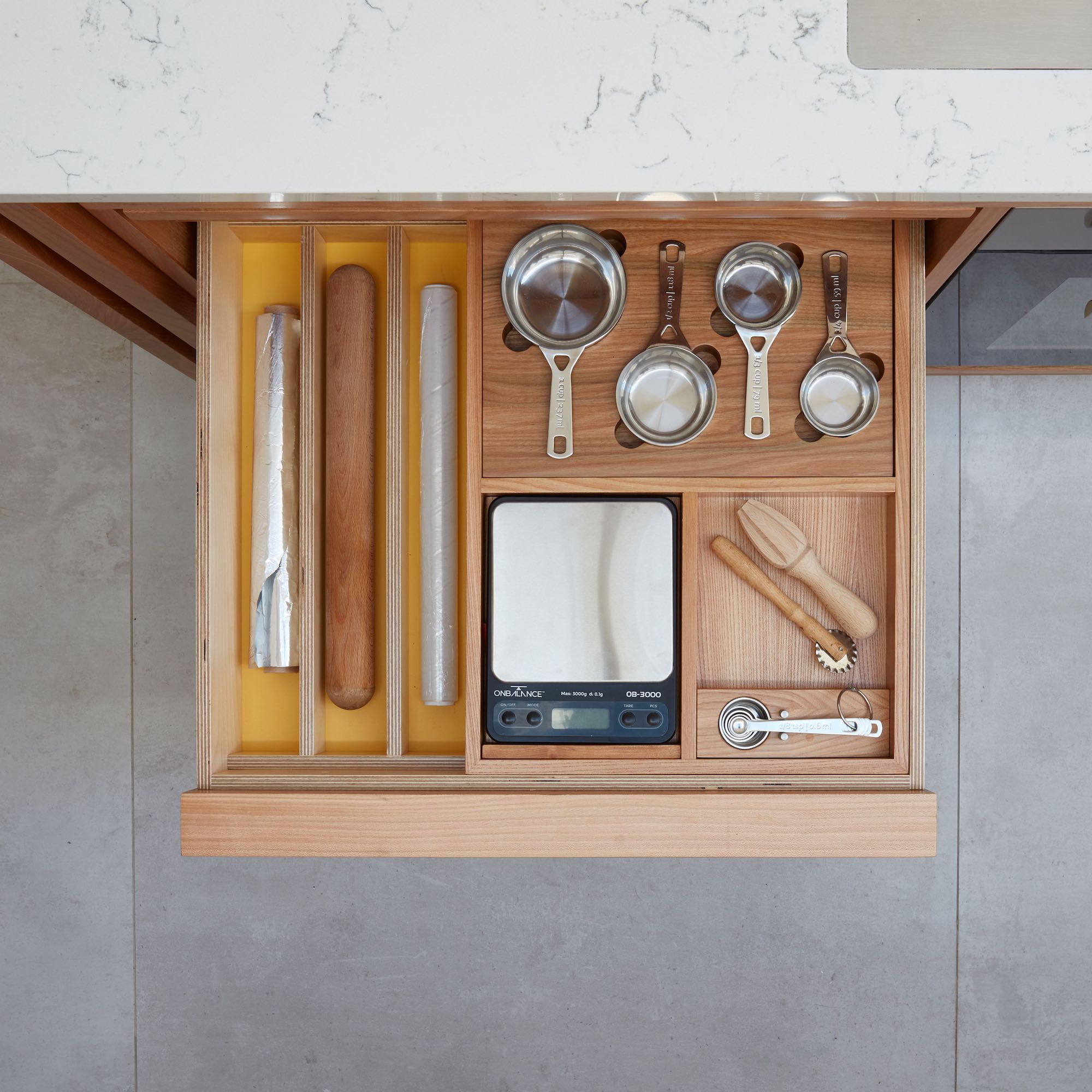
Getting your cupboards and drawers under control, and keeping them that way, can be made a whole lot easier just by investing in a few specialist internal storage solutions. You could effectively double your storage space just by creating a place for everything, and ensuring everything stays in its place.
Many modern kitchen ideas come with built-in storage dividers in drawers and perhaps some spice racks but there are lots of great retro-fit ideas that you can add in to keep clutter under control. Ikea is our first port of call, and these pan lid holders by Joseph and Joseph, available on Amazon, are pure genius.
‘We like to use clear acrylic boxes and turntables, sometimes called a lazy Susan, for storing jars, tins and condiments. This way you won't have to get items out to find what you need, you can easily see what might be running low on, and you'll be able to utilise all the cupboard space,’ adds Charlotte Reddington, co-founder of Style Sisters.
6. Adopt a one-in, one-out policy
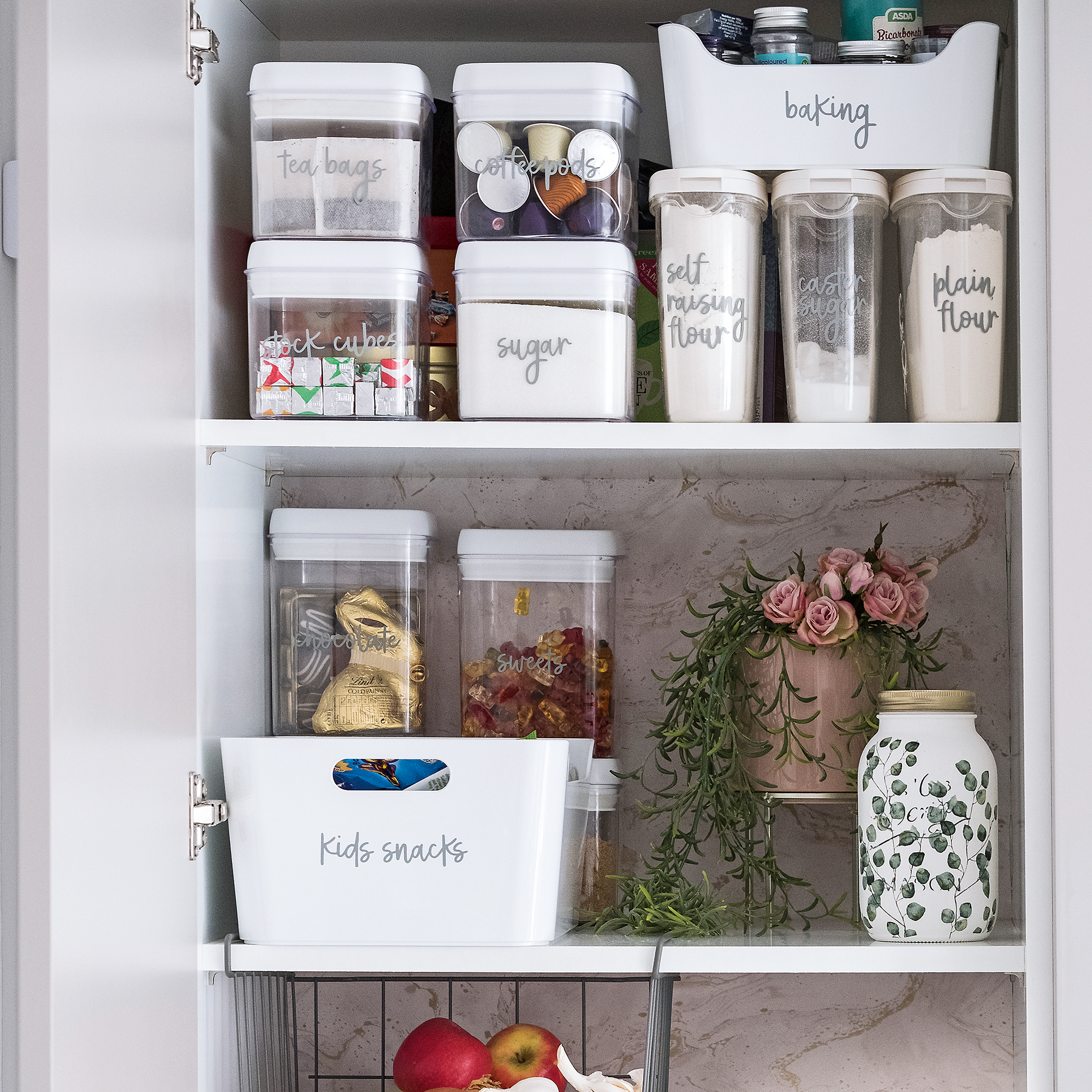
Most of us have clutter blind spots, by which we mean things we just can’t help owning too many. Plastic storage containers are a prime example. Food container drawers seem to breed overnight, and who knows why there are always twice as many lids as containers?
Some people have an obsession with tea towels, picking up a new one wherever they go, while others own enough cleaning products to keep a grand hotel spotless for a year. The answer for these is not to add in more storage solutions but to declutter your food containers or your personal worst offender.
‘We often find mugs are the worst clutter offenders when decluttering clients’ homes, people just find them so hard to edit down,’ says professional organiser Helen Constantine. ‘Mugs often come with a story or sentiment behind them, and clients will say they keep a certain mug for a specific family member or friend because they ONLY like their drink from it.’
If this is you, Helen recommends first paring your collection down to the essentials, and then adopting a one-in, one-out policy. ‘Think about how many people live in your house and how many hot drinks they have each day and work out exactly how many mugs you need. Then only allow cupboard space for another if you’re willing to part with an existing mug. And if your guests have a favourite mug – well they can bring their own!’ she says.
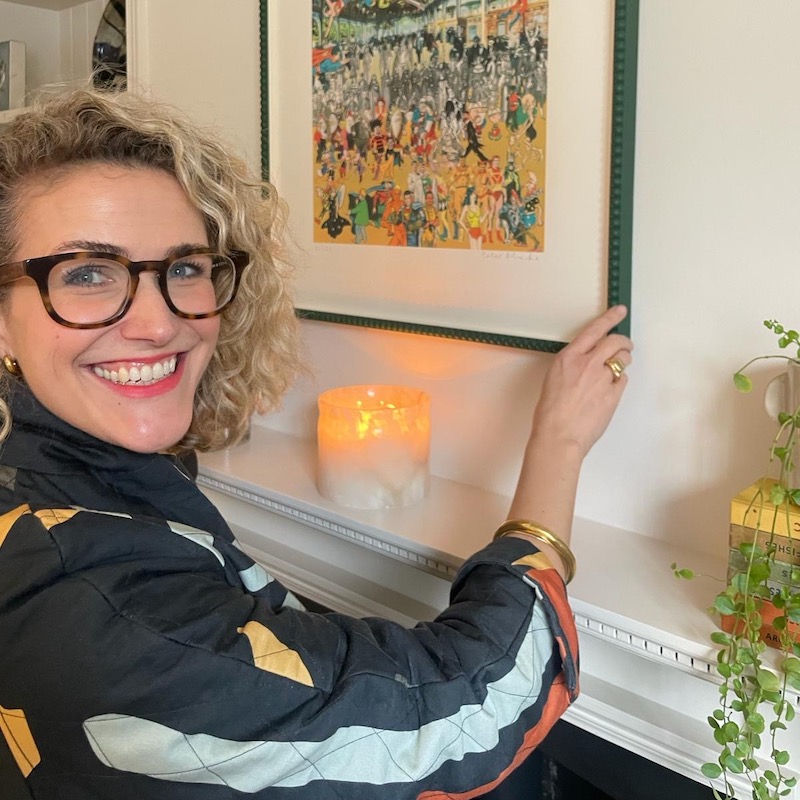
Almost 20 years in the fashion and retail industry has helped Helen make quick aesthetic decisions and hone her skills for turning chaos into calm. Now established as a professional organiser, she is called upon to reimagine spaces and put systems in place to help maintain order.
7. Harness dead space
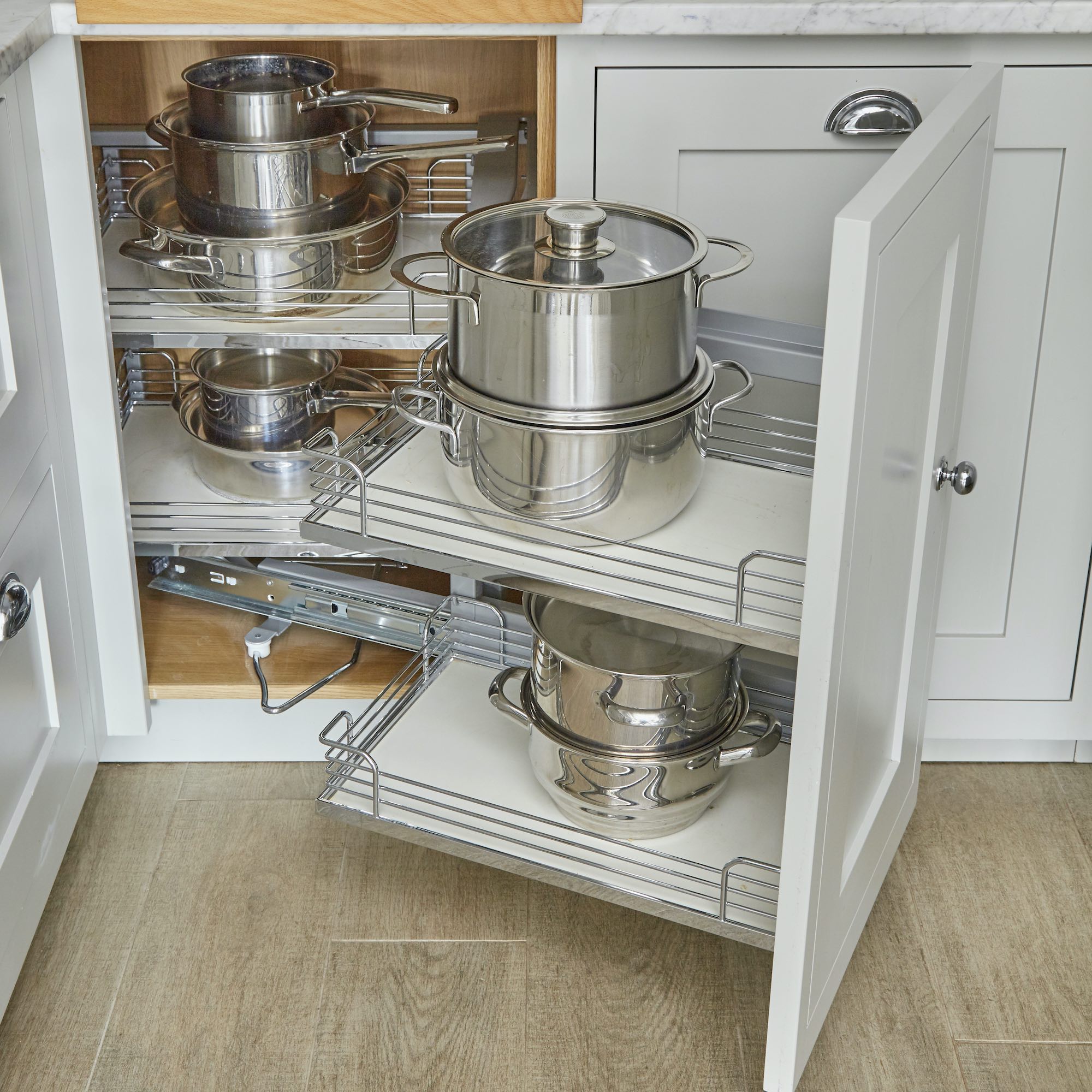
Nearly every kitchen in the land has areas of dead space. This could be right in the far depths of a corner cabinet, behind the kickboards or inside top boxes. While we’re not suggesting you cram every orifice with clutter, identifying and harnessing unused storage potential is a great way to free up space for necessities.
‘We often find clients aren't utilising the full height of their cupboards or drawers,’ agrees Helen Constantine. ‘The best way to overcome this is to use stackable containers. There is so much choice out there at the moment so you can really mix and match to ensure you're making the most of every inch of the space you have.’
Stackable containers, stepped shelving and shelf racks that slide onto existing shelving to create another layer are great kitchen storage ideas that can help maximise every inch of your cupboard space. ‘Do make use of a label maker (available on Amazon) – every Pro Organisers' best friend – on your stackable containers, which helps you know exactly where everything should go once the big shop arrives each week; meaning there's no excuse for anyone not to pitch in and help,’ adds Helen.
8. Use the ‘move out’ method
The "move out" method is a minimalist approach to organising that can be a total game-changer when decluttering your kitchen. You don’t have to be moving home, but the concept is a useful visualising tool that can help if you find it difficult to let go of kitchen clutter.
‘To implement the method, imagine you’re moving to a new home and go through your cupboards and drawers thinking hard about whether you would genuinely want to take each item with you. Ask yourself; Do I use this regularly? Do I really need this? Does it bring me joy or serve a significant purpose in my life?’ explains home-stager Elaine from Lemon & Lime.
‘Focus on keeping essential items that serve a practical purpose or bring you genuine joy. Any items that you don’t want or need, set aside into donate, sell, or discard piles. For items you decide to keep but don't currently use, consider a storage plan to keep them organised and accessible.’
FAQs
What is the 20 20 rule for decluttering?
The 20-20 rule for decluttering is a concept originally conceived in America by Netflix stars Ryan Nicodemus, T.K. Coleman and Joshua Fields Millburn, aka The Minimalists. Designed for times when you are struggling to make decluttering decisions, the 20-20 rule states you should part with an item if you can replace it for less than $20, and in less than 20 minutes.
‘The rule can help people in assessing whether they truly need certain items in their lives, and it can be a really effective strategy for decluttering and organising spaces, like pantries, drawers or cupboards. It encourages people to evaluate the necessity of their possessions regularly, leading to a more streamlined clutter free environment,’ explains Mark Godman, Director of Gentleman & A Van.
It can be a helpful way to break that mental barrier that’s preventing a hoarder from parting with something they won’t ever need. However, the 20-20 rule is not terribly eco-friendly or kind on your pocket if there’s a chance you will need to repurchase something you once owned.
$20, or £20, may not sound like a lot, but if you get rid of five items that you then need to repurchase, the costs will add up. It might be wiser to pop the items in a sealed box in your loft or garage and set a reminder to take it to the charity shop or recycling centre if you haven’t ripped it open within six months.
Where do I start decluttering my kitchen?
A full kitchen declutter should be a methodical process that’s tackled when you have plenty of time to spare – allow at least a day – and, ideally, some help at hand. ‘Taking on decluttering alone may feel challenging, but if you live with friends, a partner, or your family, get their support, especially if some items belong to them,’ says Camilla Lesser, Development Manager at Essential Living.
Always work from the top down when decluttering your kitchen, cleaning as you go. Once you have emptied out a cupboard or drawer, vacuum out any dirt and give it a wipe with a damp cloth and then ONLY return items that will be used. ‘A hard line has to be drawn when decluttering in the kitchen, look at each item honestly and be ruthless in your organisation. Create three piles: keep, chuck and donate. Go through item by item and ask yourself whether each object is still needed; would you notice it if it went missing?’ adds Camilla.
Finally, look at your food stores, fridge and freezer. Ensure all the food is within date and prioritise eating what’s there before doing the next big shop. It can be helpful to take photos to remind yourself what you already have when in the supermarket or sat on the sofa doing an online order. Anything past its sell-by date or looking dodgy should be thrown out. If it’s well within date but a mistake purchase or unwanted gift, donate to a local food bank.

Linda Clayton is a professionally trained journalist, and has specialised in product design, interiors and fitness for more than two decades. Linda has written for a wide range of publications, from the Daily Telegraph and Guardian to Homes & Gardens and Livingetc. She has been freelancing for Ideal Home Magazine since 2008, covering design trends, home makeovers, product reviews and much more.